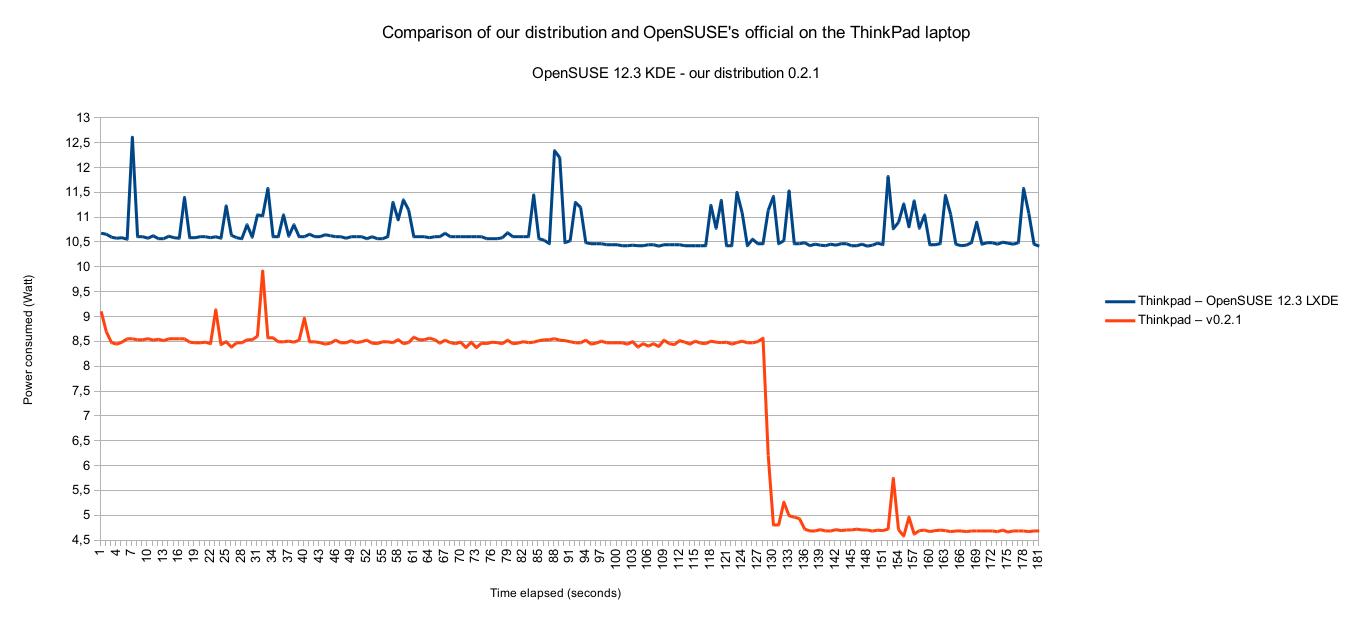OpenCPN-low-energy
OpenCPN Home
Reducing energy consumption for OpenCPN
Research on OpenCPN
This is the first approach, basically we dive into the code to find parts of code executed too often that makes the program greedy on electrical power.
This research has been divided as follow :
- A diagram approach
- Modifying the delay for
FrameTimer1andTimerAISto 20 seconds - Measures to see the impact of long timers
Other
Abbreviations in the source code.
All timers in OpenCPN's source code
- FrameTimer1
- refreshes the current position of the boat and update AIS targets on the chart
- COGTimer
- updates the rotation angle of the chart in CourseUp mode(follow the boat course)
- TCTimer
- refreshes tide and current data on the chart
- TimerAIS
- updates the target list and computes CPA
- TimerAISAudio
- if alert is on, play alert sound
Initialization process
The OnInit() method, in chart1.cpp, starts FrameTimer1 and TimerAIS.
Building a distribution with susestudio.com
When it appeared that we couldn't improve opencpn consumption and that software and system parameters were not optimized, we decided to build our own distribution with Opencpn on-board. Two criterias were token into account:
- Installation must be as simple as Ubuntu, Fedora or OpenSuse.
- Maintain this distribution must be easy(don't have to look for dependencies, edit our own configuration files quickly)
Finally, we chose susestudio.com for it suited for our needs.
Optimizing consumption
- Impact of Gmixer and Parcellite on consumption
- Screen management
- CPU tuning and pm-profiler
- Laptop mode tools
- Powertop advices
Hardware limitation
While we were consuming less power, we were wondering what is the less we could possibly reach ?
This page expose the hardware limits of our laptops.
Measure tools
This is the second way we used to measure the consumption. This page details the set up and the benefits of this new measure method.
At the end
At the end we have a perfectly working distribution with a lower consumption than the official OpenSUSE distribution. Here is a chart that compare a regular install of OpenSUSE 12.3 with LXDE and our distribution 0.2.1 on the ThinkPad laptop :
So, if your laptop isn't used for 5 minutes, you will consume something around 4,75 Watt instead of 10,7 Watt with the official OpenSUSE distribution (in average) ! The difference (5,95 Watt) isn't insignificant ! This result can't be generalized to any laptop/hardware.
You can find all the raw material here.
See also
All subpages
Pages with the prefix 'OpenCPN-low-energy' in the and 'Talk' namespaces:
OpenCPN-low-energy
- OpenCPN-low-energy/Building a distribution
- OpenCPN-low-energy/Hard drive halt
- OpenCPN-low-energy/OpenCPN-abbreviations
- OpenCPN-low-energy/Powertop advices
- OpenCPN-low-energy/Using datalogger.py
- OpenCPN-low-energy/cpu-tuning-and-pm-profiler
- OpenCPN-low-energy/diagram-approach
- OpenCPN-low-energy/first-measurements
- OpenCPN-low-energy/gmixer-and-parcellite
- OpenCPN-low-energy/hardware-limitations
- OpenCPN-low-energy/power-consumption-boot-to-sleep
- OpenCPN-low-energy/screen-management
---
OpenCPN Home
